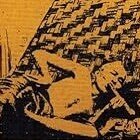Eugene Pujarniscle

Eugène Pujarniscle ( 16 May 1881, Solliès-Toucas, France — 15 Oct. 1951, Phnom Penh, Cambodia) was a French educator and novelist who offered his own definition of “colonial literature”.
A secondary school teacher in France, he resolved to leave for French Indochina in 1912, where he taught philosopjhy and French literature in several high schools and came to be appointed Director of Collège Sisowath in 1931 [having future famous historian Au Chhieng amongst his students]. In the 1920s-1930s, he published serialized novels in local reviews such as Revue indochinoise, Revue des nouvelles indochinoises and Pages indochinoises. As a literary critic, he blamed noted novelists of the time, from Pierre Loti to Jean Renaud to Jeanne Leuba, for being trapped in their European worldview and not adopting a new persona, the “colonial nature.”
This new colonial type, according to Pujarniscle, should be a free man, immune to “les préjugés, les contrevérités, les idées reçues, les poncifs, les clichés, les associations toutes faites, les hallucinations” [“prejudices, untruths, preconceptions, clichés, commonplace associations, delusional fantaisies”], and unshackled by marriage ties with an European woman. In Philoxène ou de la littérature coloniale (1931), he exclaimed:
Imaginez Pavie marié au moment où après quelques années de Cochinchine, il fut affecté à Kampot comme receveur des Postes. Il n’aurait pas été Pavie! (…) Choisir entre sa femme et la colonie, plus d’un colonial s’est trouvé en face de cette pénible alternative. [Imagine [Auguste] Pavie married at the time when, after a few years in Cochinchina, he was assigned to Kampot as a postmaster. He would not have been Pavie! (…) To have to choose between his wife and the colony: more than one colonial found himself faced with this painful alternative.]
“A quoi bon servirait de transporter des Européens à l’autre bout de la terre si on devait leur faire aimer des créatures de leur race?” [“What would be the point of transporting Europeans to the other side of the world if they were to be made to love creatures of their own race?”, asked Pujarniscle in his preface. According to researcher Grégory Mikaelian [1], Pujarniscle married twice in Cambodia, his second wife being “a woman of the Khmer nobility”[according to former prime minister Huy Kanthul’s memoirs] named Koy Yi-Houp in the Bulletin Administratif du Cambodge (BAC), where it is mentioned that the marriage occured in 1932 and she passed away in 1934.
He was certainly fascinated by the congai - young woman, initially, but the term was applied to the native concubines of French colonials — and her “science innée du plaisir” [“innate sense of pleasure”], “la Cléopâtre en caïquân ou l’Antinéa en sampot” [“this Cleopatra in caiquân [Vietnamese pants] or Antinea in sampot”], her “voluptuous character”. [see Catharina Magdalena Joubert, Lui jaune, elle blanche: les couples mixtes, l’identité et l’interculturalité dans Nam et Sylvie de Pham Duy Khiêm et Homme jaune et femme blanche de Christiane Fournier, Thesis Stellenbosch University, 2016]. In his sum of French colonial literature of Indochina, Louis Malleret quoted another of Pujarniscle’s insights on local feminine charm: “La beauté asiatique, c’est beaucoup plus encore dans les gestes et la démarche qu’il faut la chercher que dans les rapports mathématiques entre les diverses parties du corps. C’est une beauté vivante.” [Asian beauty is much more to be found in gestures and gait than in the mathematical correlation between the various parts of the body. It is a living beauty.”]
While gathering French literary texts for the Cambodian school system curriculum, Eugène Pujarniscle made his case against the “exotic literature”, of which Loti was in his eyes the main promoter: “L’écrivain exotique survole les réalités, il né fait que passer dans un pays ; le colonial, lui, s’installe, prend le temps de connaître les choses et les gens.” [“The exotic writer skims over reality, he only passes through a country; the colonial writer, on the other hand, settles down, takes the time to get to know things and people.”
[1] Grégory Mikaelian, “The Grū of Parnassus: Au Chhieng Among The Titans”, Udaya 15, 2020, p 126 – 82.
Publications
- “L’oeuvre littéraire de Jeanne Leuba”, Les pages indochinoises, 1923, n° 2, p. 47 – 59.
- “Colonie et littérature coloniale”, Les pages indochinoises, 15 septembre 1923
- “Haïkaïs indochinois”, Les pages indochinoises, 1924, p. 169 – 182.
- La petite soeur de Mademoiselle Neige, series in Extrême-Asie, 1925 – 1926; reiss. Kailash, 2006, ISBN 978 – 2842681302.
- L’œuvre de la France en Indochine: La paix française, Saigon, Gouvernement général de l’Indochine, Direction de l’Instruction publique, Imprimerie d’Extrême-Orient, 1927.
- “Comment on fait de la littérature coloniale: Pierre Loti Pèlerin d’Angkor”, La Grande Revue, Paris, Oct. 1927, p 615 – 627.
- Lectures littéraires sur l’Indochine, [part of literary cursus for ‘indigenous’ schools], Saigon, Le-Van-Tan, 1929.
- Le Bonze et le pirate, Paris, Georges Crès, coll. “Aventures”, 1929.; reiss. Paris, Plon, 1931; reiss. Kailash, coll. “Les exotiques”, 1994, ISBN 2−909052−47−8.
- Philoxène ou de la littérature coloniale, Paris, Firmin-Didot, 1931; reiss. Paris, L’Harmattan coll. Autrement-memes, pres. by Jean-Claude Blachère, 2010, ISBN 978−2−296−11497−5.
- La Bouche scellée, Paris, Georges Crès, 1931; reiss. Ed. Cosmopolites, coll. “du lecteur”, 1934; reiss. Kailash coll. “Les exotiques”, 1995, ISBN 2−909052−62−1; Catalan translation, La boca segellada, Montserrat Gallart Sanfeliu (trad.), Tripode, 2021, 144 p.
- Morceaux choisis d’auteurs français à l’usage de l’enseignement primaire supérieur franco-indigène, Saigon7, Imprimerie d’Extrême-Orient, 1933.
Photo: opium smoker, drawing on the cover of Le bonze et le pirate reissued by Kailash in 1994.
